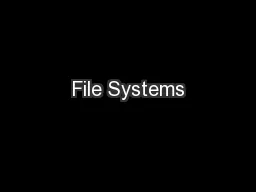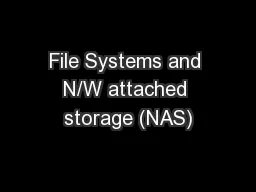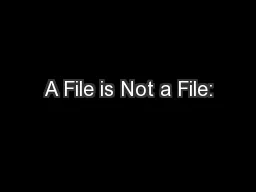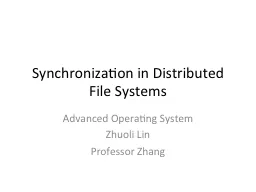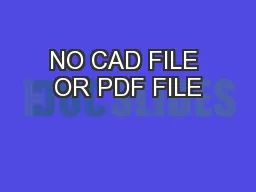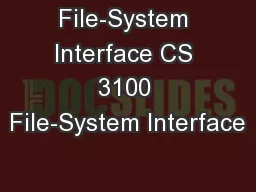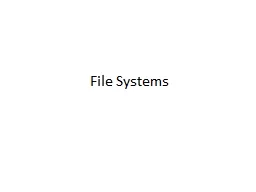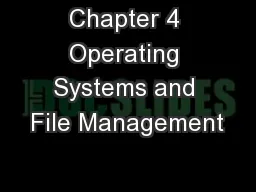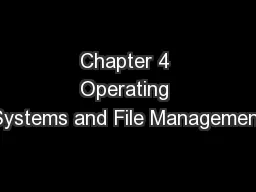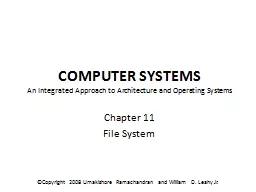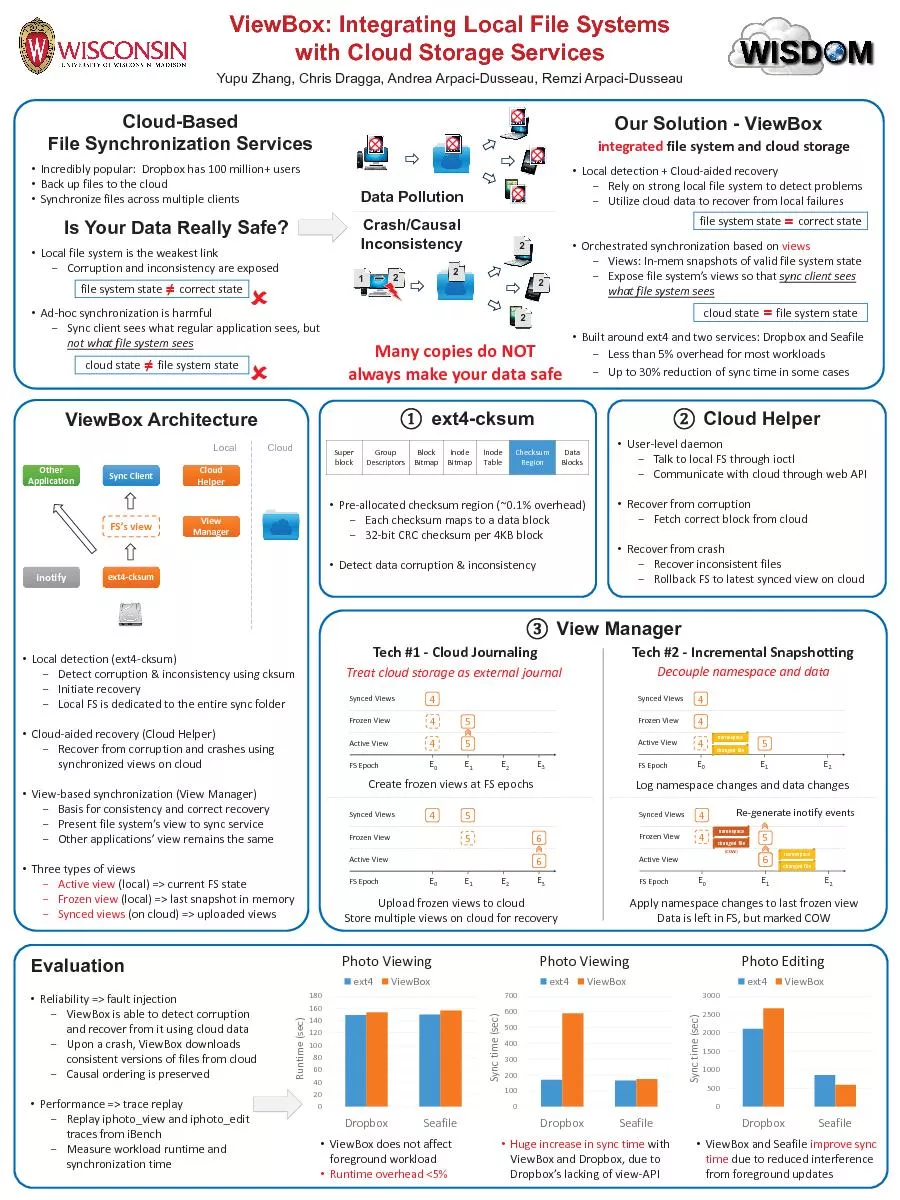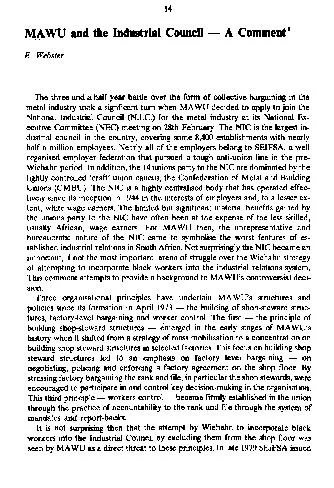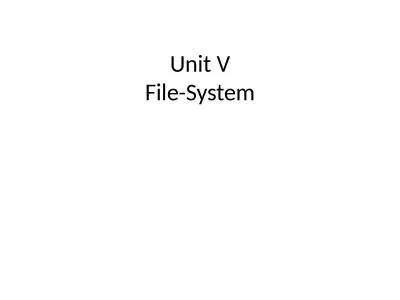PPT-File Systems
Author : trish-goza | Published Date : 2016-05-12
Workloads Workloads provide design target of a system Common f ile characteristics Most files are small 8KB Large files use most of disk space 90 of data is used
Presentation Embed Code
Download Presentation
Download Presentation The PPT/PDF document "File Systems" is the property of its rightful owner. Permission is granted to download and print the materials on this website for personal, non-commercial use only, and to display it on your personal computer provided you do not modify the materials and that you retain all copyright notices contained in the materials. By downloading content from our website, you accept the terms of this agreement.
File Systems: Transcript
Download Rules Of Document
"File Systems"The content belongs to its owner. You may download and print it for personal use, without modification, and keep all copyright notices. By downloading, you agree to these terms.
Related Documents

